“Wolves pee to mark their territory,
I stick the blue tape to mark mine.”
(Edward Krasiński)
It is already the middle of 2023 and, as far as artistic events go, this year already proved to be very attractive, even beyond the highly anticipated Timișoara European Capital of Culture program, a context which, known throughout the cultural scene for its specificity and inclination towards the field of art, did not surprise anyone with its diverse offer of exhibition events of both modern and contemporary art. The year began with the National Museum of Contemporary Art organizing a second acquisitions campaign following the one in 2020. New exhibition spaces appeared, as is natural ever year for an expanding field, with a slight acceleration in the off – independent – sector when compared to its on counterpart – private or public institutions. In this sense, in the Republic of Moldova, since the end of last year, Lutnița Gallery has brought a new fresh energy to the area of private artistic institutions, formed as an initiative led by well-trained professionals in the Cluj art scene and internationally. Public works of art started popping up again – for example, Cristian Rusu’s intervention, A walk in the park, from Iași –, however these works conceptually relate to the social context in which they were created, and thus aroused indignation and public opprobrium instead of the national-retrograde adulation usually prompted by what Vladimir Mayakovsky coined as “bearded monuments”. And at long last, in Bucharest, after the rather timid and compounded first four editions of Art Safari (between 2014 – 2017), art fairs begin to truly emerge in the form of RAD and MoBu. These have been structured and marketed with the proper tools and presented as no more, no less than mere art fairs – not a hybrid proposal (and dangerous in terms of the integrity of the works) of bringing museum heritage art together with contemporary gallery productions in the hope that the former can potentiate the later’s aura, inevitably leading to a directly proportional translation into their pecuniary value. RAD was an art fair, however paradoxical it may sound given that its central goal is transactional, which proved sincere and rather overt, an overtness similar to that which the social sciences must come up with in order to survive, according to Jacques Derrida. This is evident through the sincere collegiality of all participants, but also through the free-form structure of the pavilion chosen within the Caro hotel, with a large central skylight and fully open to the shores of Lake Tei.
However, a certain gesture, like a gift – a present – equally overt in its intentions, also gave a certain, dare I say more institutionalized, dimension to the whole context, being both reactionary by act and integrative by approach: The Artist is a Present by painter – can one still call him him that, considering all his in situ interventions from the past twenty years? – rather, visual artist Nicolae Comănescu. I will not dwell on this type of practice, of placing one’s art works in the booths of several galleries as an offering and creating a route that implicitly generates questions about their transactional applicability, nor on the relationship between the artist and the institution. This has already been thoroughly and masterfully analyzed in a comprehensive newspaper article written by historian and cultural content creator Daria Ghiu, recently published in the pages of Dilema Veche. She discussed what this action means both from the perspective of the artist’s autonomy and from the perspective of the institutions involved or the greater art fair typology, what phenomena it generates and how its structure is made flexible or cracked by the artist’s gesture. And so, I will attempt to talk about the production process of these works, their specificity in relation to the entire corpus of the artist’s works or through the lens of his biographical hallmarks.
I am doing this because this new series of works by Nicolae Comănescu has caught my attention ever since it was presented for the first time in 2020, at Invitro Gallery in Cluj, under a provocative and suggestively conspiratorial title, especially in relation to the full-pandemic context: The Grand Scheme of All Things. Limited as most of us were to small perimeters – the house, the block, the neighborhood – at that time, I witnessed the works exclusively online. But what struck me from the beginning was the discrepancy (apparent, I would find out later) within the pictorial language of these new compositions as opposed to the artist’s usual practice. Comănescu’s yellow was now in black and white; Comănescu’s canvas wraps – a heavy and hard realist painting – have now turned into abstract compositions made of textile materials glued with acrylic medium on panels (shhh!, don’t tell anyone, but some time before studying painting, he used to hang around the Textile Arts section); finally, Comănescu the iconodule is now iconoclastic and procedural. Perhaps the terminology used by Bruno Latour, Icono Splash, is all the more appropriate to the context, with irony guiding the artist’s career.
His initial sketches, made in acrylic and charcoal on paper, from the same series as the art works presented at RAD, are compositions inspired by documentary images of fights, demonstrations or urban turmoil that were converted and implicitly abstracted by a nervous and highly entropic brushwork-scribble, as if radially emanating from the converging forces in motions. The original scenes have been transformed into strange topographies where, when carefully analyzed, certain areas appear vaguely recognizable and illuminated by a trace of conflict. It is as if, with an analytical eye, the artist only glimpses the axes of movement that generated the initial conflict, perhaps hoping to discover certain patterns, symmetries as some kind of mechanism that would externally justify these “mindless” actions. The sketches have the function of acting as duplicates, as indexing marks of the existing structure.
If Comănescu is attempting to represent something, this has been limited to reproducing the traces left by the movement of bodies that have already passed, from which only the radiation, the heat remained. The folds, the cracks and textures of the enveloped physical bodies have been captured here. Or perhaps, the operation of covering all these conflictual scenes in abstract black and white sketches is a subtle nod to the bars, to the grid-walls of a typical prison. A visual narrative is thusly established, connecting two heterogenous spaces: a real place, subjected to the contingencies of current times, and the ideal and timeless space of linear geometry, highly entropically charged and implicitly asymmetrical, like the subject it represents. Symmetry, as we know, represents power, so the artist abandoned it in favor of organic accumulations that are not precisely defined territorially. Within this practice, one can glimpse a leitmotif of differentiation and repetition.
Therefore, such a typography is not part of nature, but part of an emotional apparatus or a political agenda. The date of the series’ inception might be evidence to this – to create works inspired by public demonstrations that took place in wide and open perimeters, in the year 2020 when we were all forced to live indoors, can be seen as a reactionary political gesture in itself. However, this has always been Comănescu’s approach all along – an iconodule within the wider guild of the very first images of consumerist paroxysm, the marketplace that was emerging at the time he graduated university.
I spoke of this practice as also being processual, with an undisguised poverist materiality accentuated by a repetitive gesture and its ability to reflect on similarity or differentiation. The organic trace left by charcoal on acrylic could also be seen as forming a material construction through a pictorial method.
From a formal point of view, these traces are reminiscent of van Gogh’s broken line, a character-leitmotif that recurrently appears in Comănescu’s oeuvre, perhaps as a mentor. These contours, with their own internal rhythm, are most visible in van Gogh’s sketches as a differentiation of the effect of linear marks through variations in their thickness and proximity. In works such as Sometimes all Around Me Feels Like Wednesday (2004), Comănescu makes use of van Gogh’s cypress tree as a backdrop. In Grand Prix Remix from the same series, van Gogh’s name is written on a motorcycle among many other sponsors and supporters, on which the artist rides towards the future. In other works, van Gogh explicitly makes an appearance, wearing a straw hat painted in his manner, his face erased, blurred, yet seemingly still protective.
In addition to these 14 pieces placed within eight galleries and project spaces among those present at RAD, at the Sabot Gallery booth, the artist placed a canvas from his series SCRAP METAL KABOOM ORCHESTRA (2021) behind a white canvas with a small circular cut-out slit; another work on canvas from the same series, unobstructed this time, sat in the SAC Gallery booth.
Similar to his techniques from past series dedicated to his beloved Berceni, the artist collected soil, rubble, clay from unburnt bricks, rust and slag from around the Pittner House (Reșita), integrating them with acrylic medium onto the surface of the canvas.
In a country where the ruins of promised (re)constructions mark so many empty spaces, be they urban or rural, where structural support is no longer an option, where everything is subdued by the melancholic, rough and irregular appeal of menacing stumps caught between the sleepy and symmetrical standardized urban dwellings, such an adage is quite rare in the realm of post ’90 painting. Rarely has anyone represented these industrial skeletons with such force, akin to the structural petroleum blood that gushes from and simultaneously feeds the post-communist infrastructure, as seen in the works produced in Reșita.
Moreover, the quote at the beginning of the curatorial text, by Edward Krasiński, could have seemed arbitrary, mentioning a conceptual artist when discussing the practice of one who primarily approaches the medium of painting, yet I want to bring forward a similar approach. Krasiński has been known since the early ‘60s for his line, a strip of blue adhesive tape, which he began to stick on people, walls and objects, stretching the barrier of imagination, and bringing the art space into reality. This type of practice has been viewed as akin to photography. Corresponding to analog photography, where objective reality is materially recorded by silver ions, outlining the light from objects and people and transposing it like a Planck sculpture on a flat surface, Krasinski’s tape captures the organic traces of the people or trees on which it was wrapped, functioning as a recording device of physical, material reality.
I think that, when analyzing Nicolae Comănescu’s technique of integrally inserting physical micro-particles from a real existing place that defined the artist at the time of creation, the similarities become that much more visible. If we were to toy around with -isms, this ought to be coined New Realism, or rather, New Physical Realism, because it objectively describes the atomized structed reality of the chosen representation.
In conclusion, circling back to Krasiński, he is also mentioned for the territorial nature of his lines, also glimpsed in Comănescu’s works. Having arrived in Cluj after visiting RAD art fair, I had the chance to discuss with the collaborator and curator of many of the artist’s projects, Dan Popescu. It seemed interesting to him that in the practice of a local painter he notices the use of leaking color flows, which he considers rather specific to the South. He was speculating, in a rather seductive manner, that they are akin to the territorial marks made by various species of mammals or species of people – taking a leak in public places. I often think that, for a space with as many and successive territorial convulsions and permutations like ours, perhaps this idea of outlining the territory with lines is as valid as any. And in this case, I cannot help but revisit one of Comănescu’s biographical experience, who in the past, as a means of extra income, used to hustle land for sale for corporations that he had connections via some directors that collected his art – a similar model of negotiating one’s space and individuation to how the artist approached the art institutions within the RAD art fair.
Nicolae Comănescu’s action The Artist is a Present took place at RAD Art Fair în Bucharest during 04 – 07 May 2023.
POSTED BY
Horațiu Lipot
Horațiu Lipot (b. 1989, Alba Iulia) is a curator and cultural journalist. As of 2021, he works as an independent curator, collaborating with venues either from the ON or OFF art- scene in Bucharest, ...
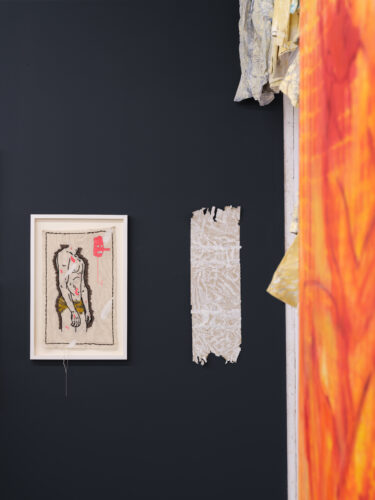
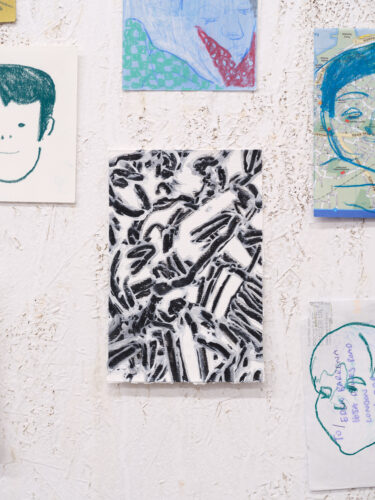
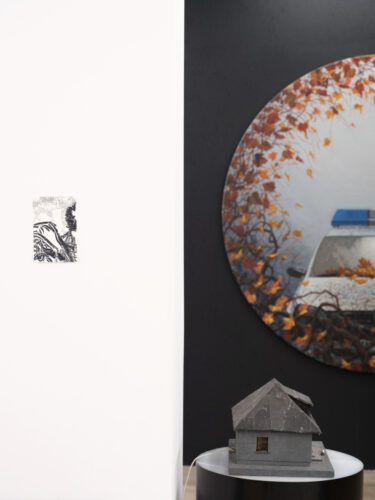
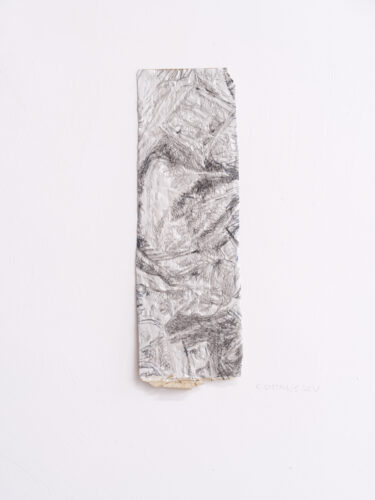
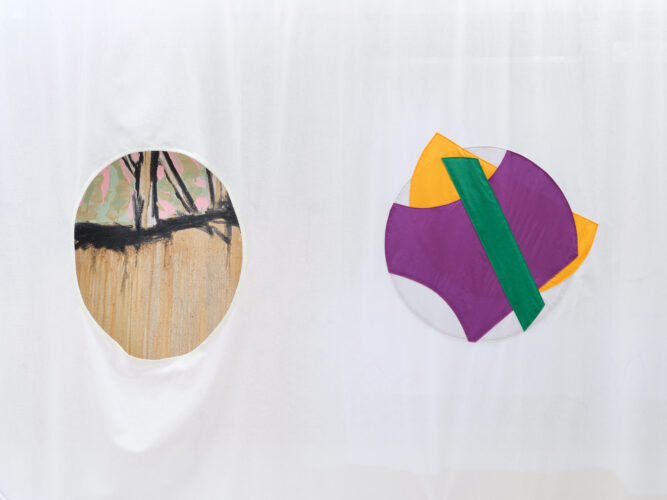
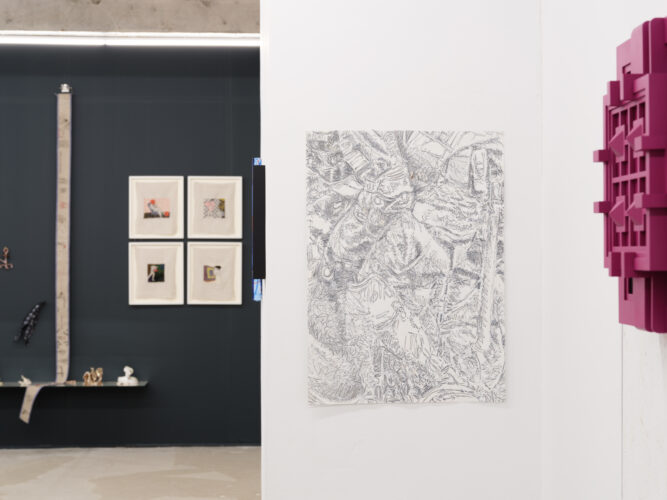
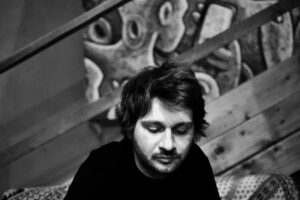
Comments are closed here.